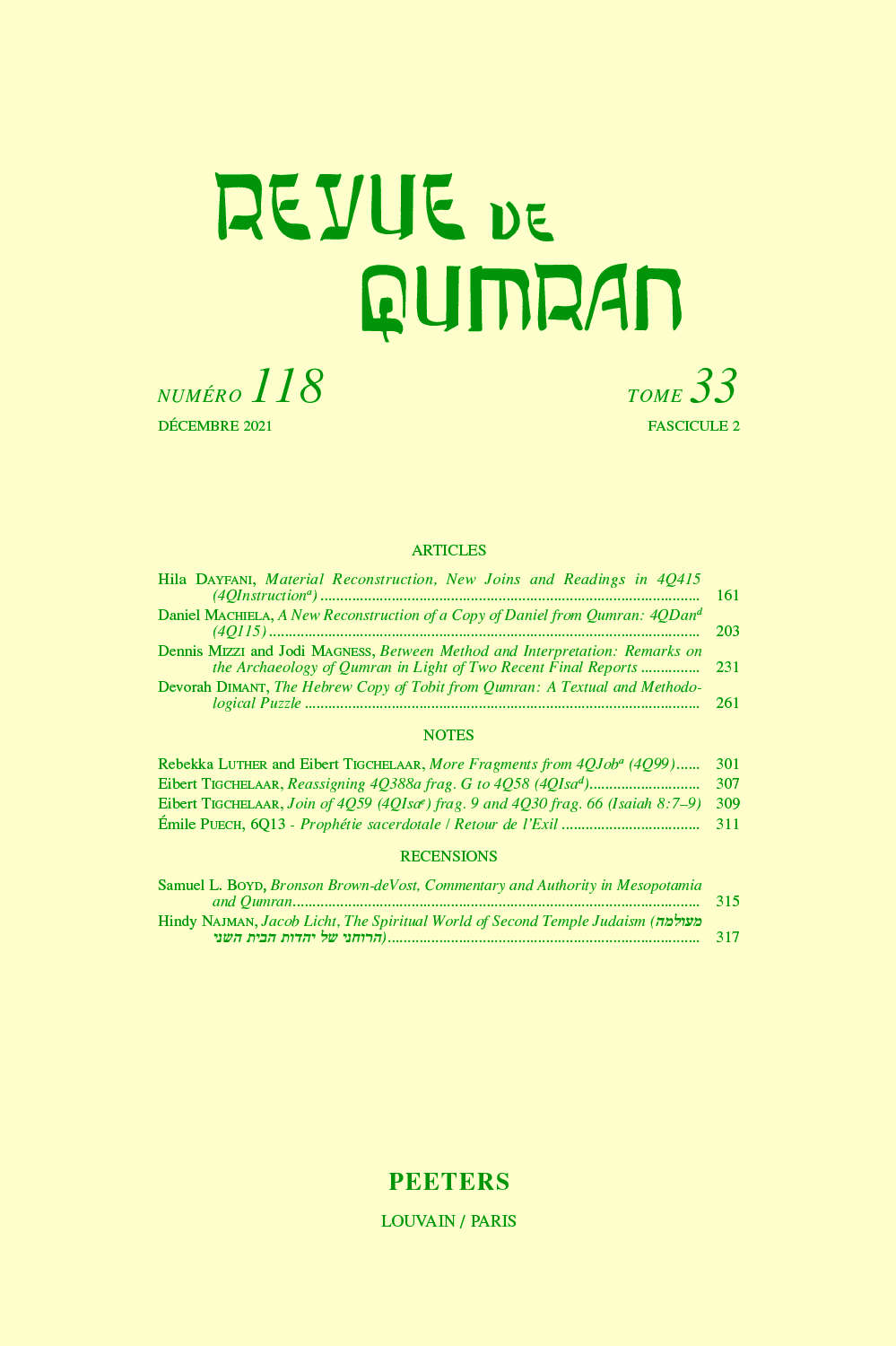 previous article in this issue previous article in this issue | next article in this issue  |

|
Document Details : Title: Reconsidering the Relationship(s) between 4Q365, 4Q365a, and the Temple Scroll Author(s): SEGAL, Michael Journal: Revue de Qumran Volume: 30 Issue: 2 Date: numéro 112, 2018 Pages: 213-233 DOI: 10.2143/RQ.30.2.3285632 Abstract : Over the last two decades, the scrolls that are generally known as 4QReworked Pentateuch (4Q158; 364-367) have been major catalysts for discussions regarding the textual plurality of the Hebrew Bible. The current study focuses on 4Q365 (published as 4QRPc) and 4Q365a, an additional five fragments, which John Strugnell had originally included as part of this scroll, but were separated off and published under the title 4QTemple(?) by Emanuel Tov and Sidnie White in DJD 13. Following a number of recent studies, and Strugnell’s original classification, it is argued here that 4Q365 and 4Q365a are fragments of the same composition, which is assigned the siglum 4Q365+. The conclusion that these two scrolls are really one raises the question of the nature of this text, and its relationship to the Pentateuch on the one hand and the Temple Scroll on the other. A number of recent studies have suggested that 4Q365+ served as a source for the Temple Scroll. This study presents a careful textual analysis of the parallel passages in the two compositions, focusing primarily on the 'wood offering' festival (4Q365 23; 11QTa XXIII). It is suggested that the additional material in the 4Q fragment is the combination of the author’s interpretation of Neh 10:33-35 (lines 4-8) and a passage copied from 11QT (lines 9-11). 4Q365+ is therefore dependent on the Temple Scroll, and not vice versa. According to this reconstruction, Lev 23 was further developed in the Temple Scroll, which then in turn reinfluenced the version of Lev 23 in 4Q365+. The implications of this conclusion on the nature of 4Q365+ are briefly discussed. The study concludes with reference to a few similar phenomenological parallels to this textual dynamic. |
|
